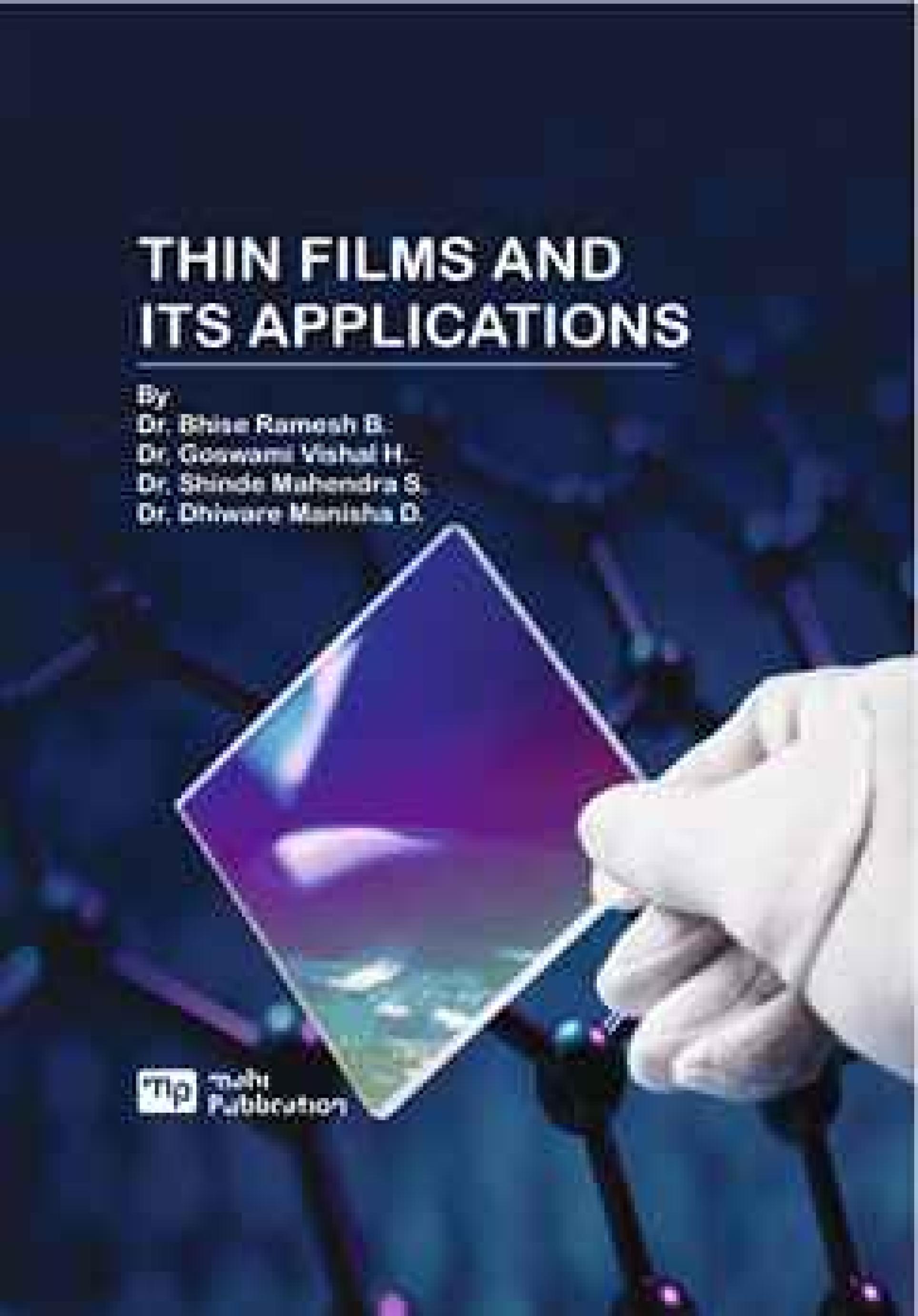Thin Films and Its Applications
Authors:
Dr. Ramesh Baburao Bhise (MSc, MPhil, DCM, DIT, PhD, MBA),
Dr. Mahendra Shantaram Shinde (M.Sc., Ph.D. ),
Dr. Vishal Hareshgiri Goswami (M.Sc., Ph.D., B.Ed., NET),
Dr. Manisha D. Dhiware (MSc, BEd, NET, PhD),
Format: Paperback | Genre : Physics | Other Book Detail
Format: Paperback | Genre : Physics | Other Book Detail
The Vacuum is the Latin word- “vacua” i.e. empty. In ideal case, nature would not
be entirely devoid anything. There is a partial empty space, where some air and
other gases have been evacuated. Especially, vacuum is a volume that has less
gas atoms, molecules and particles than the outside atmosphere. At below
atmospheric pressure vacuum is the gaseous environment. In the fifth century
the Greek philosopher Aristotle (384-322 B.C.) have hypothesised on the
relationship between vacuum and empty space and was the first to make the
claim that in nature vacuum as an empty space would be impossible to ever
produce [1]. This concept was persisted for several centuries before vacuum
th
technology established in the 17 century. One of the renowned Italian
physicists Galileo Galilei (1564-1642) [2] to undertake an experiment to create
me th asured forces to develop using a piston in a cylinder. In the middle of 17
century, Evangelista Torricelli (1608-1647), the Italian physicist and student of
Galileo invented an instrument-mercury barometer, which studied the property
of vacuum. It shows the variation in an atmospheric air pressure. During
experiment he completely filled one glass tube and close the open end with a
plug. The tube was placed lying down in a bowl of mercury and then the plug
was taken out. He found that the mercury was poured out from the tube up to
around 76 cm and remained there. During this process the tube top had no
mercury on it which initiate the vacuum development. During 1654, Otto von
Guericke (1602–1686), Germany, demonstrate the impact of pressure when the
team of horses was unable to separate two hemispheres of nearly 50 cm in
diameter had been evacuated.
Book Also Available On
Share:







